Focus on Physics
Being Unique or Being Identical
The Science Teacher—March 2020 (Volume 87, Issue 7)
By Paul G. Hewitt
When I was a child and my mother wished to be alone for a little while, she’d tell me to go out on the lawn and not to come back until I found a four-leaf clover. It was a fun activity, for they’re not as rare as people think. What nobody at the time knew was that if Mom had asked me to find two identical leaves, whether in groups of three or four, I would have been unsuccessful—no two clover leaves in the world are truly identical.
All leaves are unique
Close inspection with a strong magnifying glass or a microscope will show that each clover leaf is unique. But there’s more: The same is true of the leaves of any plant, including trees! What many people don’t realize is that scientists have determined that in all the world, no two leaves of any plants are identical. Each is one of a kind—unique. This is astounding!
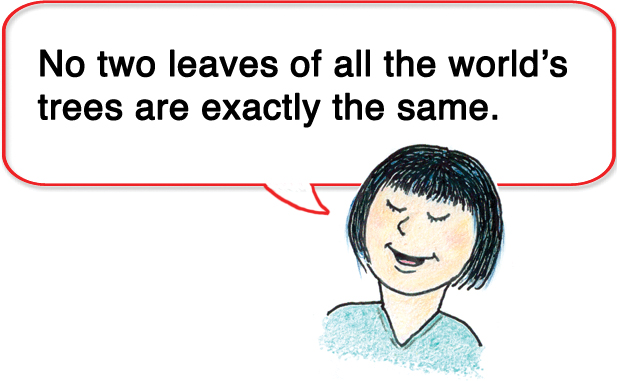
All fingerprints are unique
All of my family and friends knew that fingerprints are unique; fingerprint evidence has been used in criminal investigations for many years. The ridge patterns on the fingertips of one’s hand are not to be found on the fingers of anybody else. Each of us possesses unique patterns—nobody else has the same fingerprints.
All faces are unique
What wasn’t generally known in my childhood was that no two faces of people are exactly the same. Today, with the commonplace technology of facial recognition, we learn that each face is truly unique. Close examination shows the differences even between “identical twins.” The face we have is ours alone. Nobody else has the same one.
All penguins are unique
We see in photographs and videos huge numbers of penguins in Antarctica that appear to be identical. We don’t recognize differences within a species that would be obvious if we spent time with these fascinating birds. Similarly, when people first meet people of a different ethnicity, they see the others as all looking alike. This occurs both ways until a time of familiarity when differences become apparent.
Distinguishing among penguin faces isn’t a problem for penguins who leave the colony for months in search of food; upon returning they clearly recognize their mates. Voice recognition helps, for each communicates with its own distinctive sound. Their calls to one another are recognized among the noise of many. Perhaps their sense of smell aids identification. In any event, each penguin is unique, with no two being exactly the same.
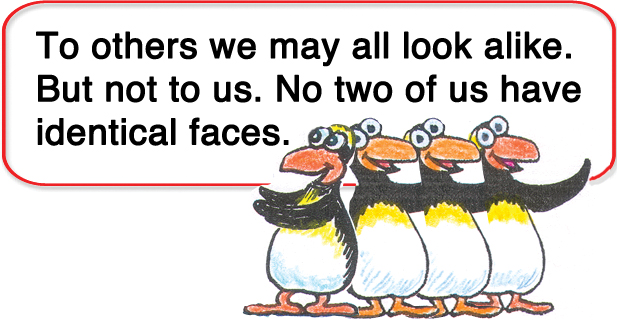
All ladybugs are unique
My wife mentioned recently that the spots on the backs of ladybugs were unique to each ladybug. Although the pattern of spots is the same within a species, there are small individual differences. Going further, no other ladybug in the past, nor in the future, will have spots that are exactly the same. This is quite incredible!
Why one of a kind
One main reason for uniqueness has to do with physical composition. Leaves, faces, ladybugs, and other entities we see in nature are composed of constituent parts. Variations in the arrangement of these parts, however subtle, contribute to their differences. So we ask, are there any groups in which the members are identical—the same from one member to another? The answer is yes—the fundamental particles of physics, the most familiar of which is the electron!
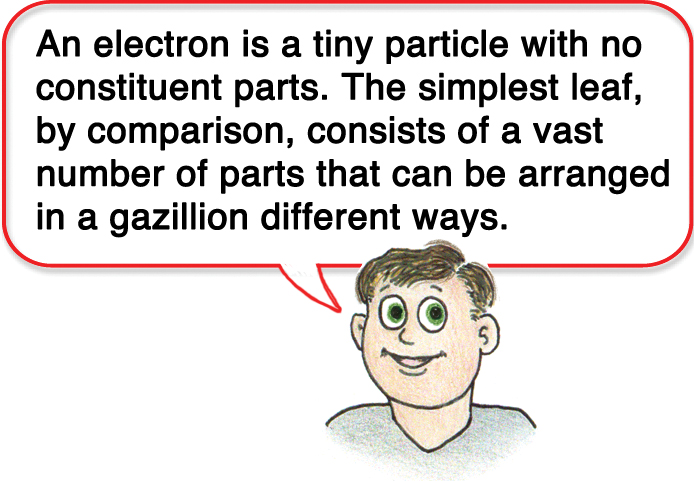
All electrons are identical
Electrons are one group in the family of fundamental particles. Other fundamental particles include quarks, muons, and neutrinos, all of which are indistinguishable from one another—all are the same. The electrons that travel in wires, carry power to our homes, and vibrate in our smartphones are the same electrons as the electrons that surround the atomic nucleus. One electron is the same as any other electron: they are truly clones.
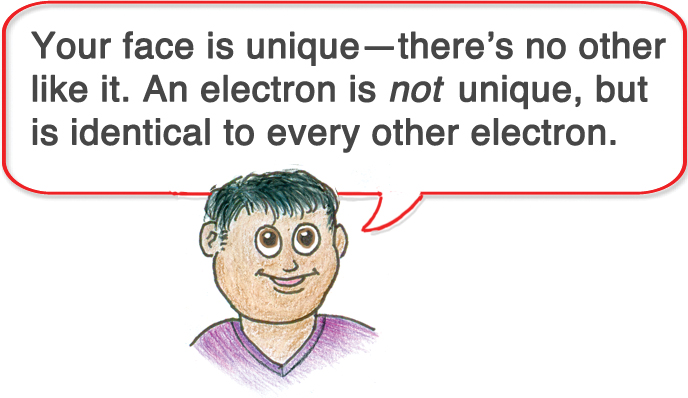
The exclusion principle
A tenet in the quantum world is the exclusion principle, which, applied to electrons, states that no two electrons in an atom can occupy the same quantum state simultaneously—a backbone of all atomic theory and quantum physics. If electrons were not identical, two of them could occupy the same state of motion—a big quantum no-no. Other fundamental particles obey the exclusion principle as well. If they didn’t, the world would be a very different place.
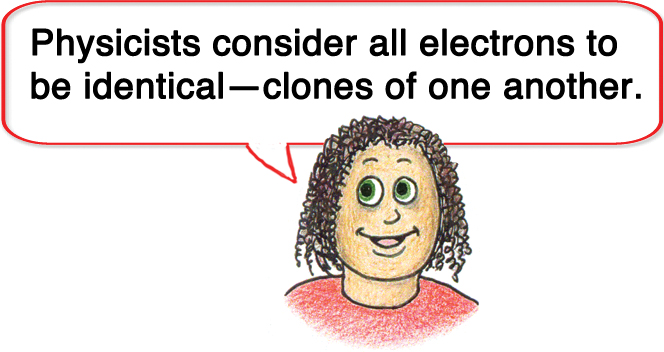
Two different worlds: the macroworld and the subatomic world
Being unique is common in the macroworld. The structures of one-of-a-kind things are generally complex, having many structural parts. Things composed of dozens (or millions) of individual parts typically have so many ways of arranging the parts that no two arrangements will be identical. However, in the subatomic world where identical things exist, structures are simple, having no smaller parts.
Under certain conditions, some composite particles—particles made up of smaller particles—can be identical as well. For example, hydrogen atoms in their ground state, or lowest energy state, are identical. But identical composite particles tend to be no more complex than a simple molecule. We don’t have to go very far up the complexity scale before being identical, although possible in principle, becomes less and less likely. So the uniqueness of every leaf, every face, and the pattern of spots on a ladybug can be understood in terms of the complexity of their structure at the atomic scale.
Paul G. Hewitt (pghewitt@aol.com) is
the author of Conceptual Physics, 12th edition; Conceptual Physical Science, 6th edition, coauthored with daughter Leslie Hewitt and nephew John Suchocki; and Conceptual Integrated Science, new 3rd edition (the “most beautiful science book ever”), with coauthors Suzanne Lyons, John Suchocki, and Jennifer Yeh.
Physical Science Physics High School

